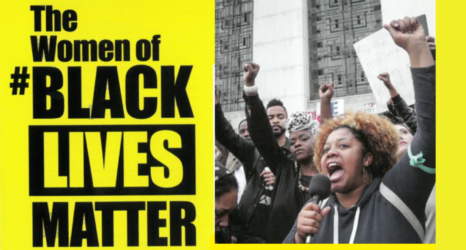Event organizers expect up to half a million people to fill the streets of Washington, D.C. this Saturday at the March for Our Lives in support of school safety and laws to reduce gun violence. The event, scheduled to start in front of the White House, will be led by the teenage survivors of the mass shooting at Marjory Stoneman Douglas High School in Parkland, Florida. Hundreds of simultaneous marches—658 at last count—are set to kick off in other cities around the world in order to amplify the message.
In a year of unthinkable occurrences, this stands out. Across the country, young activists are standing up and taking charge on an issue that has beaten down countless others before them. The odds are stacked against them, and powerful figures have lined up to shout them down—but even the most jaded and skeptical among us are saying that the kids could really do it this time. We’re living in a world where the impossible is constantly bubbling up in the newsfeed. Maybe “inconceivable” doesn’t mean what we thought it meant.
The scale and intensity of gun violence in America has been a well-documented sub-genre in online media, but the horrifying reality of it all never seems to gain any traction in the public mindshare. Maybe the numbers are just too viscerally sickening to be processed on the grand scale, as though the entire nation has been in shock for decades.
Here are some of the numbers that many Americans readily admit but can’t really accept.
Source: Soo Oh/Vox
There have been 1,600 mass shootings in the U.S. since a gunman took the lives of 20 children at Sandy Hook Elementary School in Newtown, CT, in 2012. Public mass shootings are accelerating rapidly—from one every 200 days in the three decades before 2010, to one every 64 days in the current decade so far. Of the 20 most lethal mass shootings in U.S. history, seven have been carried out since 2015. More than 100 people have been killed and several hundred injured in the three mass shootings since Trump was elected, which adds up to heavier casualties than all the other incidents of mass shootings combined since 1949.
Mental illness has nothing to do with it, unless you define the shooters as mentally ill retroactively. Only four percent of gun deaths are related to mental illness issues. What does correlate with mass shooting is a profile of out-of-control males with a history of domestic violence. In 57 percent of mass shootings, a male shooter targeted a family member or intimate partner before killing others. Looking closer at those incidents, 81 percent of the victims were women and children.
In all of the mass shootings since 2015, the male shooters were found to have a history of domestic abuse. Law enforcement reported that the Parkland shooter was responsible for many incidents of physical abuse and threats against his family and his ex-girlfriend. If he had been arrested for those incidents, it would have been more difficult for him to obtain the rapid-fire assault weapon that he used to kill 17 students and teachers.
This is not a matter of opinion. Abusers with easy access to automatic weapons kill more people—and even the most cursory review of these basic facts should make it clear that normalizing violence with shooter drills and arming school staff members will do nothing but increase casualty counts. Yet that is precisely how Florida lawmakers responded to the Parkland shooting, passing a “half-measures” response that bowed to intense pressure from the gun lobby. Even as it raised the minimum purchase age for guns to 21, created a three-day waiting period and banned the sale of bump stocks, accessories which convert semi-automatic weapons into full automatics, the bill funded a program to arm teachers, ignored suggested changes to background checks and kept high-fire-rate assault weapons easily available to virtually anyone—even those with a history of violent, volatile and abusive behavior. (Even this relatively weak and ineffectual legislation is unacceptable to the NRA, which immediately began viciously fighting the legislation in courts.)
Actions like these have driven Parkland survivor Emma Gonzalez and her peers to holds lawmakers’ feet to the fire. She recently warned them of such, remarking that “politicians who sit in their gilded House and Senate seats funded by the NRA telling us nothing could have ever been done to prevent this—we call BS!”
It feels “inconceivable” that it has only been a month since the latest massacre, yet the March for Our Lives has already been well-organized and publicized all over the planet. From the vitriolic response of online and offline trolls, it appears that the resolve and moral authority of this generation clearly terrifies the old order and those who have profited from the status quo for far too long.
The gun reform movement continues to garner momentum, as many supporting sister events have quickly mobilized into action—such as the #Enough: National School Walkout on March 14th and the Monument for Our Kids, a memorial to children killed by gun violence that displayed on the lawn of the U.S. Capital earlier this month. Comprised of about 7,000 pairs of shoes to represent the number of children killed by gun violence since the 2012 Sandy Hook massacre, the silent for kids memorial is a reminder to us all of those who can’t march due to gun violence.
Although the hashtag #TimesUp was created to support women who have survived harassment, discrimination or abuse, it has grown to have a far greater cultural relevance than the originators ever intended. The time is up for all of those who have thrived on racism, violent oppression and abuse of power in many walks of life.
As Gustave Aimard suggested, and many others have paraphrased: “More powerful than the brute force of bayonet is the idea whose time has come.” This spring it’s time for a new generation and a new understanding of what’s possible.





